Welcome to my Photo Blog!
10 Statements About Leica M Gear
Photographing with Leica gear automatically moves you into a special world of photographic gear and attitude which comes with pros and cons. And this is what I want to talk about today. I categorize my main observations of the past 6 years with 10 Leica camera gear based bullet points below.
1. Leica makes the best lenses
This saying derives from the earlier days in photography especially when Leica actually developed and marketed one of the first 35 mm based rangefinder film cameras. Leica had lots of knowledge in optical design from building microscopes and objectives. Their lenses remained "gold standard" for many years to come with a very unique character. Things started changing when Japanese manufacturers entered the market with alternatives to Leica screw-mount L39 lenses. A race started in keeping rangefinder lenses small but making them faster in maximum lens aperture - often Leica stayed ahead of the competition. SLRs changed the game another time significantly in the late 50s where predominantly Japanese camera manufacturers successfully entered. Leica also entered later the SLR market (and then stopped making them) but kept focusing to this day on rangefinder cameras. In the past few decades, (D)SLR lenses have become optically excellent, and even Leica lenses kept their reputation as one of the best, regular users can get nearly undistinguishable image quality from a Japanese camera brand for a much smaller cost. Many Leica lenses have become collector items driving further up used as well as new Leica lens prices. So even Leica lenses are still technically excellent, they are now much more comparable to competitive lens products than > 30 years ago. But the name has developed into a luxury brand reputation, and there are not few who purchase Leica lenses as investment option to sell it even for a higher price later. Trick is to find Leica lenses which are reasonably priced, have an outstanding built and image quality, and fit the photographer's need. When I get such "gem", I don't let it go!
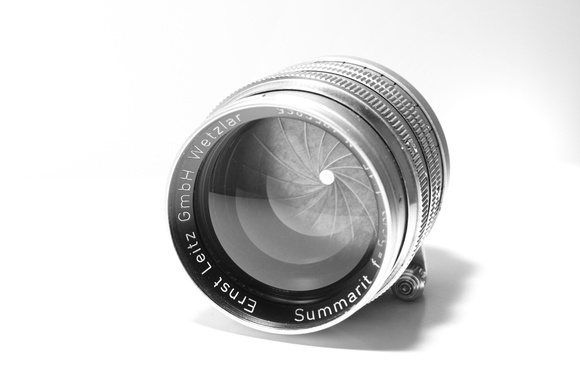

The vintage Leica 50/1.5 Summarit LTM or M lens (it came in both mounts) is such gem in Leica's lens line.
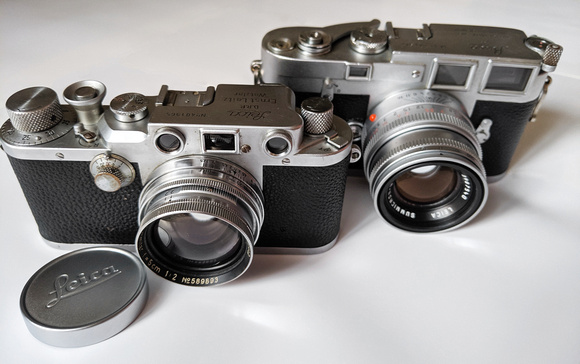

Two Leica 50 mm versions which are 60 years apart from each other: On the left, the Leica 50/2.0 Summitar LTM lens attached to my Leica IIIc camera, on the right the modern Leica 50/2.0 Summicron pre-ASPH lens attached to my Leica M3.
2. Leica means luxury
One the first look this is the case. I don't even go into well advertised reasons why Leica gear supposedly needs to be expensive - German manufacturing with highest standard in quality control etc. Certainly all good reasons but still won't explain the huge jump in price compared to highly reputable Zeiss lens gear for example. Leica keeps purposely prices high by making gear only in limited amount. Since demand seems always high, prices remain high and never drop. So far I have not seen any Leica lens which has dropped in value. If a lens is made as new item in larger quantity for regular consumers, the lens price might stay constant over multiple years after introduction. But for many other Leica lenses, the price rather increases significantly over time. Depreciation occurs with digital Leica camera gear. But used lens prices won't drop significantly from the original introduction price for quite a while. You can get now in 2021 a used standard Leica M 240 for about $2500-2800. The camera was introduced 2012 for approx. $7000. If you compare this to the drop in value of other digital camera brand gear, Leica cameras hold their value much better. This is one benefit when buying into Leica gear - you can often resell it easily and for a smaller loss in value compared to the purchasing price. Debit remains to make the first plunge into the Leica eco-system. IMO best option is to buy Leica gear used - instead of going after the latest and most expensive "luxury" priced gear, better go for a camera one generation earlier and inform yourself about older Leica lens versions to buy used. You might not shoot with the latest digital sensor on the market by doing so, but it won't stop you from taking remarkable photos with the gear.
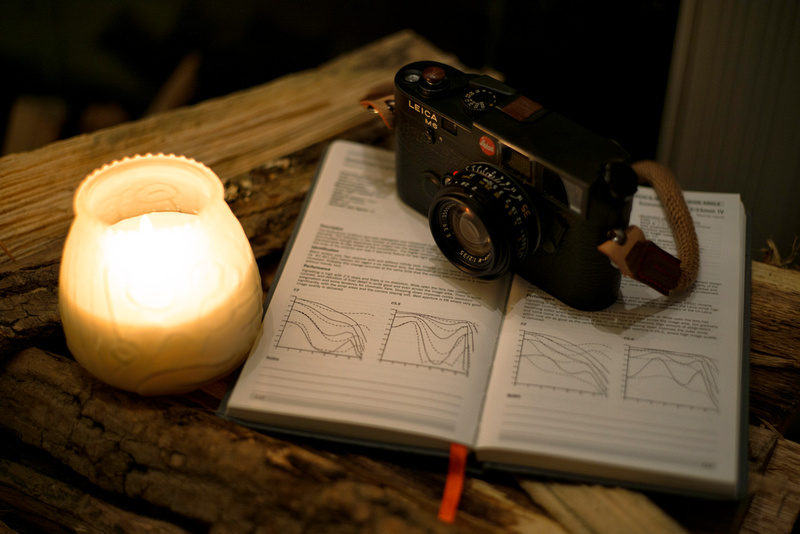

My Leica M6 with 35/2.0 Summicron IV lens sitting on the 7th edition Leica pocket book with the corresponding 35/2 MFT charts. The photo itself was taken with my Leica M-E 240 camera and 50/2.0 Summicron pre-ASPH lens.
3. Leica has a huge used gear market
From my experience this is definitely the case and one big benefit combined with the brand. Even the latest camera gear is backwards compatible with lenses made in the 1930s! A simple screw-mount/M-mount adapter is enough to use the big majority of vintage lenses on modern digital (or film) Leica rangefinder cameras. It is a personal decision to use vintage lens gear and/or newer lenses. Leica has released so many different lens versions just in one focal length that it will take time for a new Leica user to familiarize just with the basics and differences between versions. This is definitely a challenge I struggled also with for quite some time when I started with Leica. I was forced to crosslink given serial number and lens version to determine how this corresponds to performance. It is important to vest this time since lens versions can be very different in price for multiple reasons. If you are lucky, you might find a Leica lens which is priced much lower than it should be for this specific lens version. Likely the lens was grouped into the wrong lens version category by the seller. It doesn't happen often though - I only experienced it once which saved me a good amount of money when I purchased this lens. In general patience is a virtue when looking for used Leica gear - good stuff tends to move fast, but with patience you can simply wait for the right opportunity. I waited about 3 years to finally find a nearly mint Leica 35/2.0 version IV lens for a price below my upper limit for it. The pandemic has driven used Leica prices up due to limited supply because less people were selling. I found times in the past that the used market had good choices to purchase from and others where I decided to rather wait. It is rather unpredictable, so it is a good idea to keep an eye out if interested in something to purchase used. Some stores/websites are better than others to purchase used Leica gear from my experience, but I am not disclosing here my preferred sources. You will figure it out yourself when you did your homework first! Make sure to avoid accidentally going after collector lens items if you want to use regular camera gear.
4. Leica community
Leica takes good effort to maintain a community of users. There is the fee-based LHSA membership program and the free online Leica forum just to name two. I don't want to over-generalize, but Leica seems to attract enthusiasts who are embedded with the name Leica and people who like technology excellence. There is also a large group of collectors and resellers. Be aware of this in discussions because it seems generally open for criticism when bringing up gear price and competitiveness to other brands. But the Leica forum can be a good resource to get specific help when looking for a photography or Leica gear based solution. The forum has quite good discussion threads about analog gear, too. You will find multiple Leica-based or Leica-associated YouTube channels. I benefitted a lot in gaining technical knowledge about camera and lens versions from Leica Store Miami videos and photography-wise from a series named Leica Conversations.
5. Das Wesentliche
Means in English "The Essential". Leica uses this slogan to advertise ease of use and lack of high tech controls in their cameras as benefit over more advanced competitive cameras which tend to have more bells and whistles. Leica purists applaud this, and for many this is an important reason to use Leica. On the other hand, I find myself conflicted with this. I can see that having too many options in a camera can be confusing and distracting from focusing on the composition and just at focusing, aperture, and exposure time to take the shot. This is probably because I am using multiple brands with different kind of cameras in parallel. And sometimes more options to have in a digital camera are a benefit! I can always choose not to use an available menu option, but I can never use it if it is not available in the first place. Video in my Leica M-E 240 camera is such example for me - I rarely use video, but it is a nice option to have if it is actually needed. IMO it doesn't make the menu more cumbersome if there are one or two video options designated to select from the main menu. Good thing is that Leica now offers different variations of the main camera version - versions with limited and with more functions.
6. Leica gear is less intrusive
Yes. But it depends what camera is used within this description and to which other systems it is compared with: Leica LTM/M and the Leica Q cameras are generally small that they can be easily carried around in an inconspicuous camera bag or just carried around the neck or with the hand strap. M lenses are small that the overall camera plus lens size is similar to a Fuji mirrorless camera (MLC) system. Since MLCs are more common in the market, people often mistake Leica M cameras for a MLC. This is good because it is even easier now as Leica shooter to blend in. The red Leica dot can be detrimental for inconspicuous shooting but never actually happened to me in the US where the brand is less known (but I experienced it once to be a big eye catcher when shooting with my Leica M6 in Germany a few years ago). Taping the dot and name labels helps but can harm the paint when the sticker is removed. Really small in size are older Leica II and III series film cameras with L39 (or LTM) screw-mount. I love to use my IIIc for travelling when I need to keep my film photo gear as minimal in size as possible. Those pre-M series rangefinder film cameras don't have a red dot and only carry the Leica name on the top plate. Other Leica cameras and lenses like the newer SL and S-series are much larger in size and much more rarely used for example for street photography.
7. Leica's rangefinder system is best for manual focus lenses
This is true from my experience. Hitting the focus with any of my Leica rangefinder cameras is faster than using the same manual lens attached to my Sony A7R MLC with focus peaking or focus magnification. But rangefinder focusing can be cumbersome also in specific situations - for example when the composition includes lots of repeating patterns like a blind or brick wall for example. In this case it is better to estimate the distance to the subject and adjust slightly with the rangefinder after some zone focusing. Focus tabs on lenses can be helpful even it took me a long time to get used to them: when focusing with the left pointer finger and holding the camera to the eye, the more the finger is extended on the focus tab, the further away the subject is and closer to infinity. When the pointer finger is pulled back, the lens is focused to closer distance. A tab position in the middle and vertical underneath the lens is about 1.5 meters (5 ft) which is the standard distance for street or portrait photography with some zone focusing to create sufficient depth of field. I find the focus spot much easier with any rangefinder camera than I can do it with a SLR and split focus screen.
Also keep in mind that Leica made and makes different viewfinders. The smaller the magnification number, the smaller the middle rectangle (finder image) gets to align both of the image parts for focusing. Probably one of the best viewfinders is in the Leica M3 especially when shooting 50 mm and longer M lenses: this camera has a unique magnification of 0.91x which is no longer made. With more shallow depth of field at longer focal lengths, this magnification ensures much better focusing especially also for faster lenses. Debit of larger magnification is that wide frame lines like 35 and 28 mm get too hard to see in the viewfinder. Standard magnification in most Leica M cameras is around 0.68x or 0.72x. Sometimes you might see one with 0.58x magnification which is made predominantly for using the camera with wide lenses.
Debit of rangefinder focus systems is that they might require recalibration after many years of usage. In some cameras like the Leica M6, a reflection phenomena in bright light can occur which is called patch flare. Then the finder image window turns reddish and doesn't move anymore when trying to focus. Only way to to resolve this hiccup is by shaking the camera body carefully a bit back and forward. This might take a few seconds, and I had it happen that by then the moment was gone where I needed to take a picture of. The M3, M2, and M4 cameras as well as the ones starting with newer versions of the M7 and later camera versions don't suffer from this.
The minimum focus distance (MFD) of rangefinder cameras is at least 0.7 or 1.0 m. Leica lenses normally don't offer a focus scale below this MFD. But other M lenses like some Cosina-Voigtlander lenses do - when using them on a Leica M camera without LiveView, make sure only to focus down to 0.7 m (or 1.0 m with the Leica M3 for example). Otherwise you will misfocus and get a blurry photo - happened to me multiple times! Digital M cameras can make use of shorter MFD lens focus with either LiveView or electronic viewfinder attached. Both methods circumvent the rangefinder focus system.
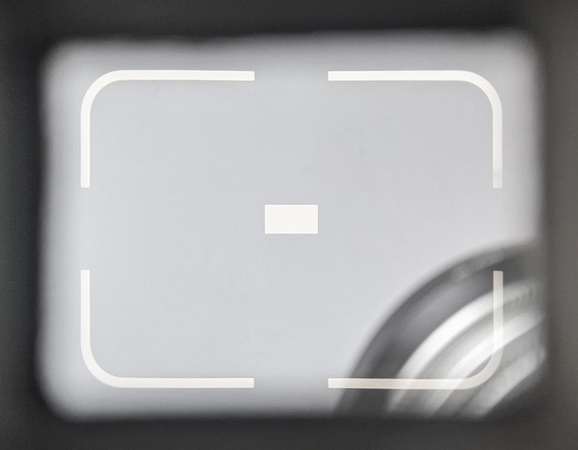

View through the Leica M3 viewfinder with 50 mm frame lines. The rectangle in the middle is the finder image to focus by overlaying the viewfinder area with the rangefinder patch view.
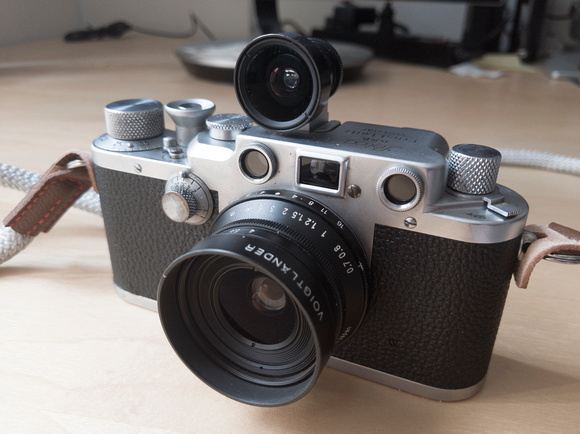

For wider focal lengths, an external viewfinder is needed to compose the image. Focusing still needs to be applied through the rangefinder. Here shown the Cosina-Voigtlander 21/25 external viewfinder to be used with the 25/4 Snapshot-Skopar LTM lens on the Leica IIIc.
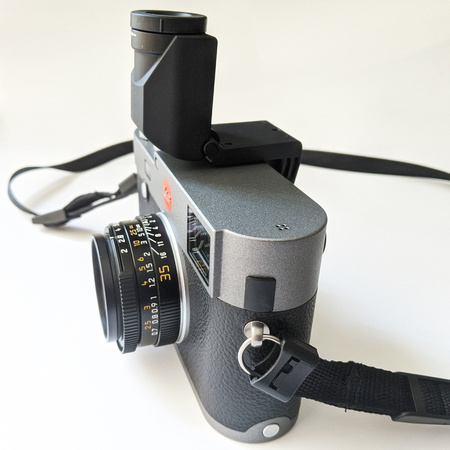

With digital Leica M cameras starting with the M 240 series, external electronic viewfinders (EVFs) can be used to work with any attached lens. The VF-2 EVF allows vertical composition, too. Here shown in combination with the Leica M-E 240 and 35/2 Summicron-M lens Vers. IV.
8. Leica M and long lenses?
Biggest limitation of the Leica M system is using the rangefinder system with longer lenses. 135 mm already gets difficult to focus within the rangefinder patch (better to do this with an external viewfinder on the hotshoe), and even less common 200 mm lenses are the maximum what is available for this system. I believe most Leica M photographers use lenses generally only up to 90 mm focal length myself included. This limitation in tele lenses is a debit when a longer reach is needed for sports/race events, and wildlife. For action photography, Leica M cameras are limited to 1/4000 sec in the most modern ones - film Leica M cameras only shoot up to 1/1000 sec. For longer focal lengths, either another camera brand system is better, or the Leica SL which offers longer lenses.


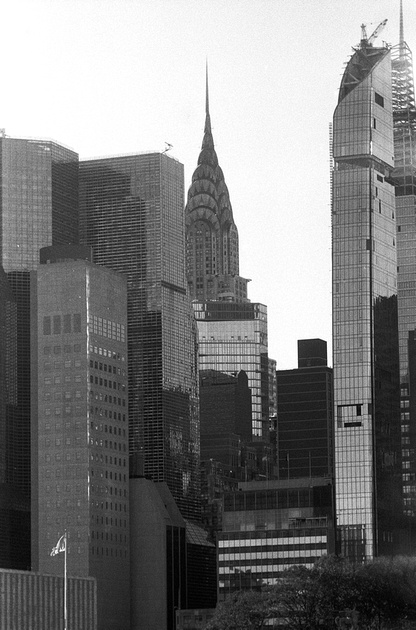

Photos above: Taken with my longest M lens, Leica 135/4.5 Hector lens on my Leica M3. Internal rangefinder focusing was applied.
9. Shooting wide with Leica rangefinder cameras?
Leica rangefinder cameras only offer frame lines down to 28 mm but not wider (older cameras are limited to 35 mm like the Leica M2 and 50 mm in the Leica M3). I love shooting wide, and it is not uncommon for me to use 21 mm for landscapes or indoor photography. In such case, I need to use either an external 21 mm based external viewfinder which is then mounted on the hotshoe. Even there is some parallax between external viewfinder and the view through the lens, it is small enough for wide lenses that it doesn't matter. Alternatively, I can make use of LiveView or an external electronic viewfinder (EVF) on a digital Leica M where the image is exactly what the sensor sees. I believe the widest available rectlinear M lens is the Cosina-Voigtlander 10/5.6. Only one fisheye lenses is currently available in M mount - the TTArtisan 11/2.8 lens (stay tuned for my review!). Zone focusing works very well with ultra-wides on Leica film cameras. It is especially easy with digital M cameras and using LiveView or EVF.
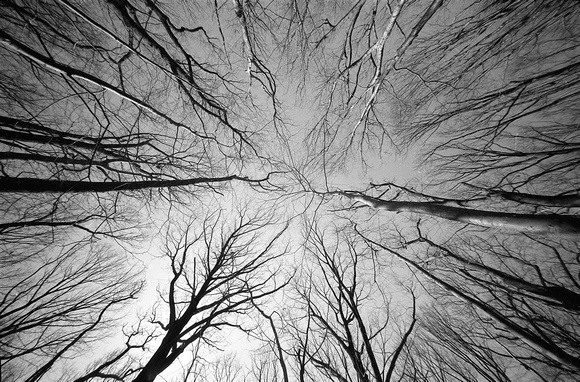

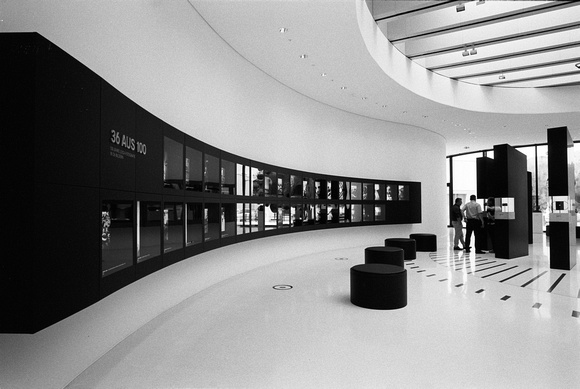

Photos above: Taken with my widest M lens, Cosina-Voigtlander 12/5.6 lens on my Leica M6. I used the Voigtlander 21/25 external viewfinder which provides approximately a 12 mm field of view outside the frame lines.
10. Leica Service
A needed but unfortunately expensive option to be aware of when buying in this system! Most common service with Leica M cameras and lenses is the so-called CLA: Cleaning-Lubrication-Adjustment. Prices for this service vary significantly between Leica service centers and third party Leica-focused repair shops. Leica service centers tend to take a longer time with service and repairs. For repairs of older Leica M film cameras I recommend from personal experience third party shops. I sent in my Leica M3 twice to a third party repair facility after I bought it used: first for CLA and then a few years later again after the shutter broke. I also had a CLA done with my Leica IIIc and a 50/2 Summitar LTM lens which I won at a local auction. Not all Leica M cameras are accepted by third party repair facilities - often their possibilities are limited in case electronic parts of older M cameras have to be replaced. Make sure you send in your gear as certified package where a signature is required when delivered.
An Underrated Vintage Gem: Canon 50/1.4 LTM (screw-mount) lens
INTRODUCTION
This vintage Canon 50/1.4 LTM lens is much less known and hyped than its closest counterpart, the Canon 50/1.2 LTM lens which is nearly twice as expensive than this f/1.4 version. I tried twice to get a good copy of the Canon 50/1.2 LTM lens which both turned out to be failures: one copy was in excellent shape, no scratches and no haze, but the aperture ring was misaligned - when the lens was fully open, it showed f/2.8 as fastest f-stop on the aperture ring. I returned it to the store where i bought it from and asked for a repair which was refused - instead I got my money back to purchase another copy from a different domestic seller. Also an excellent lens copy, but I instantly realized when testing it on my digital mirrorless camera that one lens element was reversed not allowing me to focus to infinity. I again had to return the lens - the seller confirmed the issue and returned the money. Then prices went to the roof for this 50/1.2 LTM lens, and I gave up looking for another copy - instead I found a good deal for a Leica 50/1.5 Summarit lens which is great (link to another of my photo blogs: Leica Summarit 50/1.5 review).
Coming back to the Canon 50/1.4 LTM lens: I used to shoot with a Canon 50/1.4 EF lens on my DSLR many years ago which I traded in for a Canon 50/1.2 L EF lens at the time and never looked back. Therefore I never really looked closely at the Canon 50/1.4 LTM version until found an excellent copy. Before I purchased, I read a few reviews of this lens and watched some YouTube videos which mentioned it - not too much information is available describing this lens in detail regarding the performance both digital and with film. I found that all reviews mentioned its good center sharpness wide open at f/1.4 in opposite to the Canon 50/1.2 LTM version which is all about bokeh but doesn't provide sufficient sharpness even in the center wide open. I could also tell from photos shown as examples in other review articles that the 50/1.4 bokeh is smooth and much different from the Leica 50/1.5 LTM Summarit counterpart. This made the Canon 50/1.4 LTM an attractive alternative to test.
LENS HISTORY
This lens has an interesting history, and good thing is that nobody ever has to compete with collectors and collector prices for this lens since Canon made millions of it from 1957 until 1972. The Canon 50/1.4 LTM got the nickname "Japanese Summilux" since it hit the market in 1957 before Leica was able to offer the first Summilux f/1.4 lens to the market in 1959. Leica felt the pressure from Canon and its success with the Canon 7 rangefinder camera plus 50/1.4 lens. Even the Canon f/1.4 lens is nicknamed "Japanese Summilux", the lens design is different from its Leica successor. The Canon 50/1.4 LTM is a Planar lens design, 6 elements in 4 groups. Canon made two identical versions of the 50/1.4 LTM lens - version II starts around SN 29700. Optics of both versions are exactly the same. The lens I got and review is version II.
OBSERVATIONS
The 50/1.4 LTM lens is not bulky like its 50/1.2 counterpart - the lens does not interfere with the viewfinder. It's fully made of metal but only weighs 250 grams. Regarding the design, there are few limitations to be aware of: Like most other LTM lenses of this time, minimum focus distance (MFD) is 1 meter. The filter thread is an unusual one which makes it difficult to find suitable filters for this lens: 48 mm. When I bought my lens copy, it came with a 48 mm UV-skylight filter. Often the original lens hood has to be purchased separately - I saw the metal Canon S-50 lens hood going on ebay for up to $40. If you are lucky, you might find a deal of a good one for less than $15 which sounds much more reasonable. The hood clamps on the outside lens barrel but will sit on top of an attached filter. I would be cautious with filter plus hood placement since the hood barrel is pushed out a couple of mm in such combination depending on filter thickness. This can potentially lead to vignetting. Therefore I am using this lens without filter when attaching the S-50 lens hood.
The S-50 lens hood blocks some part of the lower right corner of the viewfinder but which is still well workable. If better view for composition in the viewfinder is needed, the hood needs to be removed from the lens. The lens itself won't intrude a lot into the corner of the viewfinder.
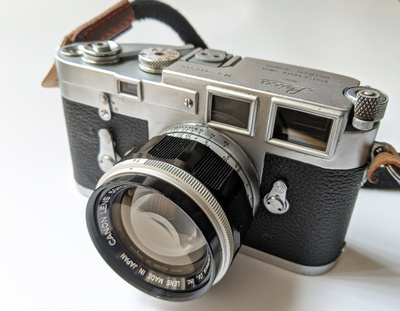

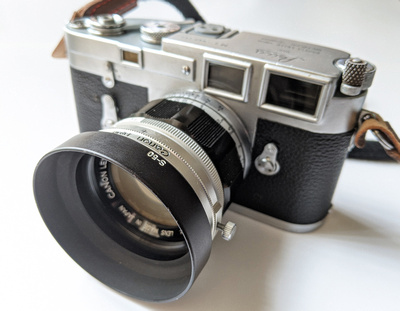

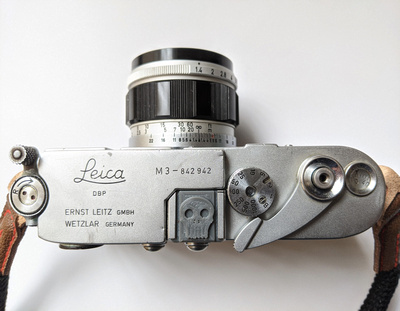

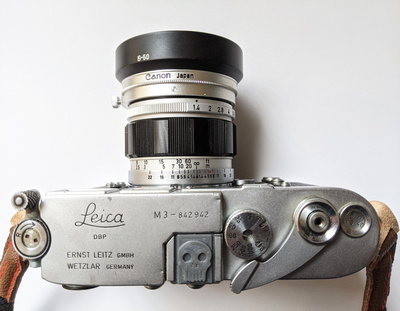

Photos above: Front and top view of the Canon 50/1.4 LTM lens without and with hood attached to Leica M3 with LTM/M adapter.


Partially blocked Leica M3 viewfinder with part of the lens and lens hood
The Canon 50/1.4 LTM lens (version II) is not as sensitive to lens flares like many other LTM lenses are from this time period. I was able to shoot without lens hood with the sun high up and only getting few flares when actually shooting directly into the sun. The photo below was taken at f/5.6 and providing a nice artistic looking circular shaped flare. I did not experience lens flares when the sun came from the side independent on aperture used.
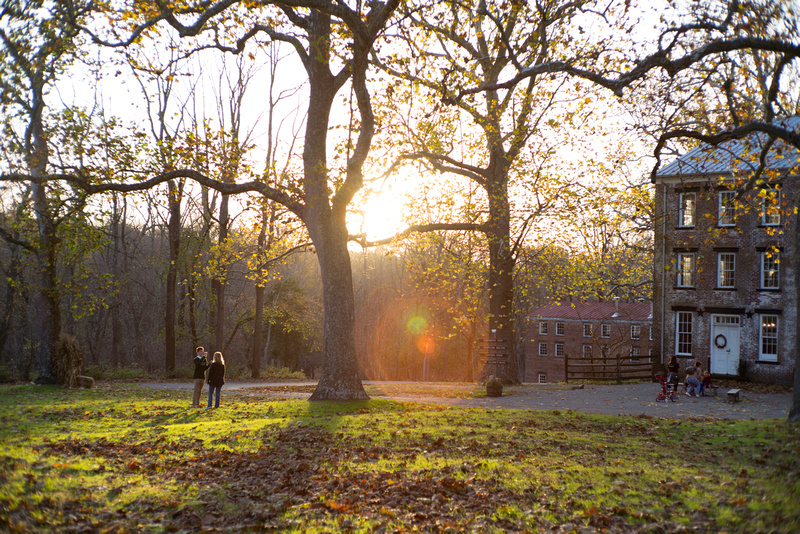

Canon 50/1.4 LTM lens @f/5.6 against the afternoon sun and observed sun flare. The flare provides a special artistic look into the landscape.
The lens copy I received was a bit stiff regarding turning focus and aperture rings after I received it. It might not have been used for a while. Just working the rings back and forward, made the turning much easier again. The aperture ring clicks into the f-stops and makes a bit of a different metallic sounding click when opening to f/1.4. The aperture can be closed to f/22 - so far I have only used the lens between f/1.4 and f/11. I suspect you will run into lens diffraction issues at apertures f/16 and f/22. The focus ring has a click-stop at infinity which needs to be released to be able to focus closer. Focusing with this 50/1.4 LTM lens is very precise due to the long focus path the ring has. This can be a pro or con depending on the user of the lens: if quick refocusing is needed, the lens is not ideal because the focus ring has to be turned a much longer way from one distance end to the other. If you have time to spend for precise focusing, this ring is ideal. Personally I got very quickly used to it, and it is not an issue for me at all. The focus ring is able to turn a bit further below 1 meter MFD - not an issue with more modern rangefinder cameras which focus down to 0.7 meters MFD. But it is something to keep in mind when using an older Leica LTM or M camera (for example Leica III series or Leica M3) where the rangefinder focusing path is limited at 1 meter MFD. If you overturn the focus ring below one meter in such older camera arrangement, you will misfocus on the film.
The lens shines wide open - that's the aperture where it should be used most of the time in my opinion. Not mentioned anywhere else to my knowledge and to my full surprise, it provides a circular bokeh effect which I really like in vintage lenses. Reason for its smooth bokeh is its 9 blade diaphragm. Closest in similar performance here is the Leica 50/2 Summitar lens which has 10 blades. But both circular bokehs are very different - the Leica one has much more expressed bokeh circle rings whereas the Canon lens is much more smooth in this effect. The center focus at f/1.4 is sharp even on the Leica M-E 240 digital 22 MP sensor. Sometimes it can be a bit challenging with a 0.72x rangefinder magnification to focus this lens accurately wide open especially with repeating patterns present in the center of the image.
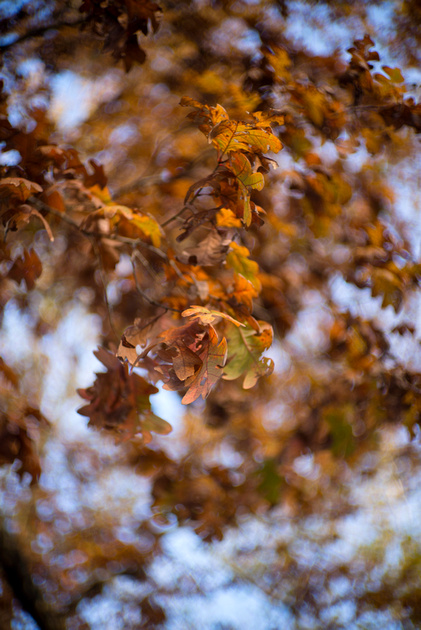

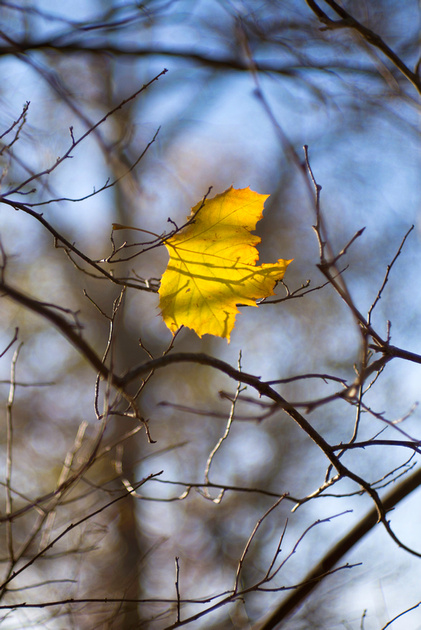

Photos above: Canon 50/1.4 LTM lens @f/1.4 on digital Leica M-E 240 camera. Circular bokeh pattern on the left and smooth out-of-focus blur on the right
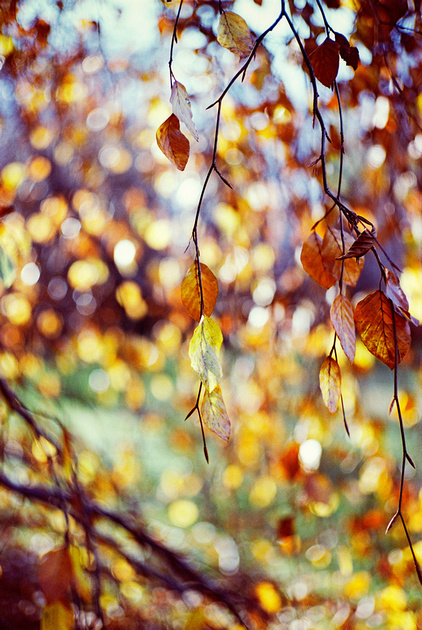

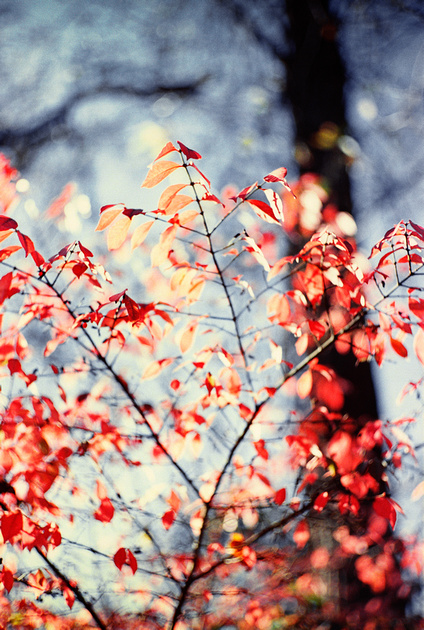

Photos above: Canon 50/1.4 LTM lens @f/1.4 on Leica M3 camera with Kodak Ektar 100 film. Beautiful bokeh pattern at f/2.0 in both photos.
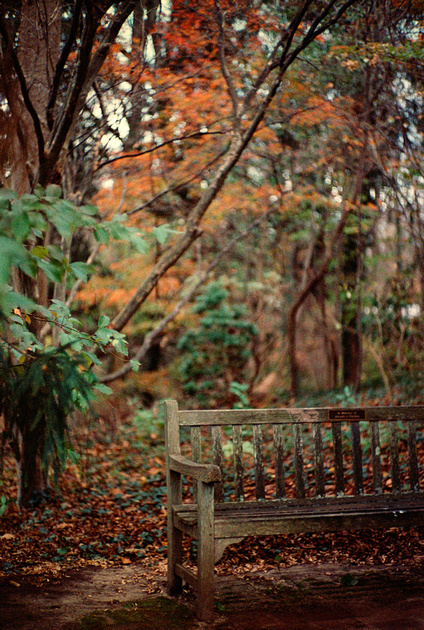

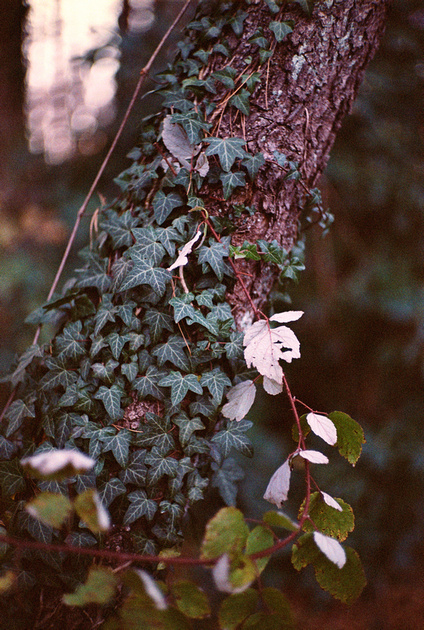

Photos above: Canon 50/1.4 LTM lens @f/1.4 on Leica M3 camera with Fujicolor Super HQ 200 film. Beautiful bokeh effects at f/1.4 in both photos.
Stopped down, the lens is sharp throughout the frame at f/8 and already delivers impressive sharpness at f/5.6 with slight corner blur. B&W photos look great with high contrast provided by the 50/1.4 LTM. But also the color rendition is fantastic - tones are a bit more on the warmer side compared to modern Canon lenses. Especially blue sky and tones in yellow/orange/red tones appear very natural but well saturated. The contrast of this lens is worthwhile pointing out since it provides sharp looking photos with depth. JPG files out of the camera barely need any additional post processing.
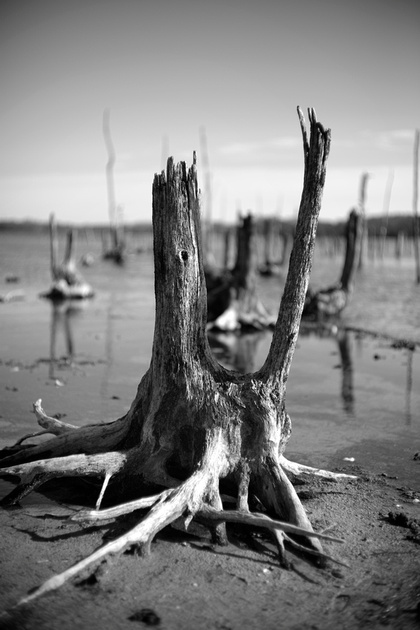

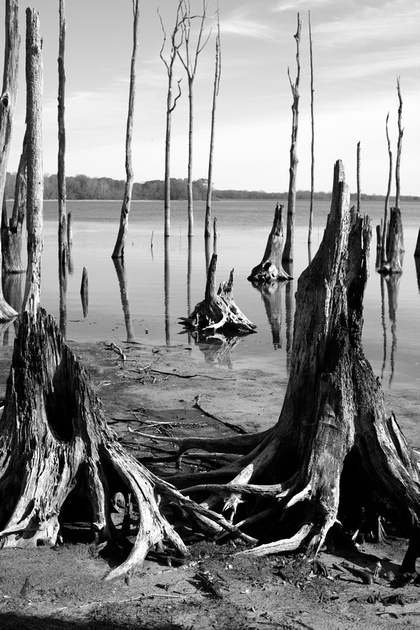

Photos above: Canon 50/1.4 LTM lens on digital Leica M-E 240 camera @f/2.0 (left) and f/8.0 (right)
SUMMARY
If you are in the market of a fast regular focal length vintage lens for relatively low budget, this lens should be seriously considered. Even named "Japanese Summilux", it certainly is not a competitor of a more modern aspherical lens element based Leica Summilux 50/1.4 lens. But if you are in for a vintage photo look with dreamy and sometimes circular bokeh, the Canon 50/1.4 LTM provides this all. This lens is IMO at least as well built as the Canon 50/1.2 LTM counterpart, maybe even better. The lens is made to be shot wide open and will perform in situations where shallow depth of field is used as artistic element in the image composition, for portrait work, or in low light photography. Risk of sun flares is significantly reduced with the lens design and some lens coating and can be further avoided with the optional Canon S-50 hood. The relatively low weight for a lens with metal housing and small size for a f/1.4 lens makes it very attractive for inconspicuous photography and low weight travel. The lens has its limitations regarding minimum focus distance (MFD), unusual and less practical filter diameter size, and longer focus path of focus ring. In my opinion no really big dealbreaker for the interested semi-professional amateur using this lens. In a short period of time, this lens has become one of my favorite 50 mm rangefinder lenses to use in digital and on film.
Pros:
+ Sharp in center at f/1.4
+ Some nice corner vignetting at f/1.4 further emphasizing blur-out effects (disappears when stopped down)
+ Circular and soft bokeh effect wide open with 9 aperture blades
+ Low sun flaring issue with sun hitting the lens without hood from the side
+ Rigid metallic lens built
+ No focus shift and very low/negligible field curvature
+ Very sharp throughout the frame at f/8 and f/11
+ Excellent low light performance
+ Great for B&W photos due to the higher contrast provided by the lens.
+ Price for a f/1.4 lens able to be mounted on LTM- or M-cameras
Cons:
- Focus and aperture rings are not as easy going as on Leica and CV lenses
- Longer focus ring turn needed from one focus end to the other (potentially a con depending on need)
- Unusual filter size of 48 mm and hard to find low cost filters of this size
- S-50 lens hood doesn't work well with lens filters
Additional Examples:
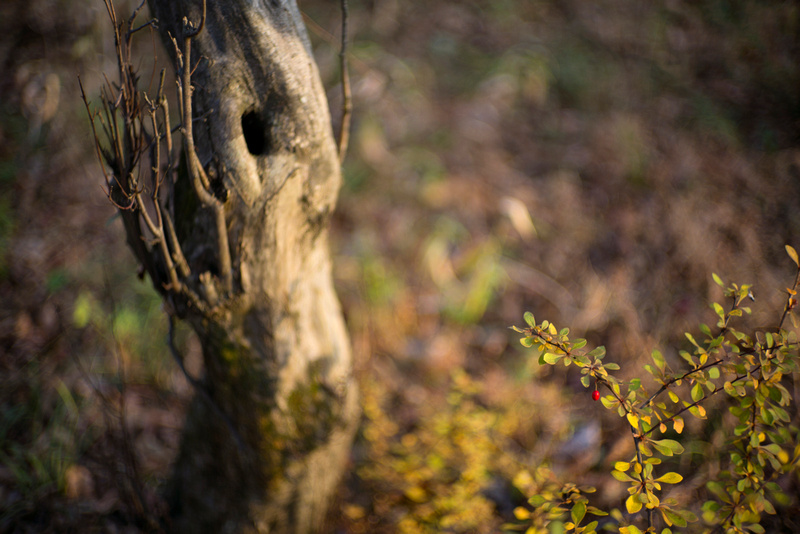

Photo above: Canon 50/1.4 LTM lens on digital Leica M-E 240 camera @f/1.4 with single focus point on the tiny bred berry in the lower right. Busy but smooth circular bokeh in the background
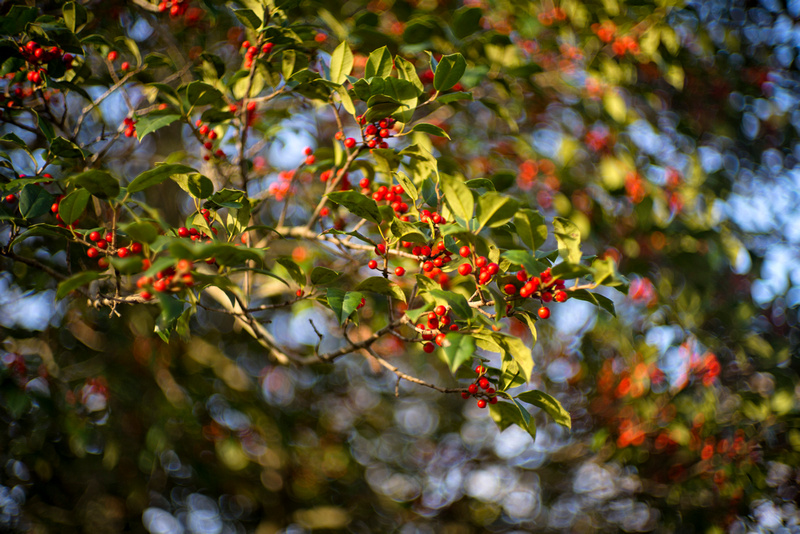

Photo above: Canon 50/1.4 LTM lens on digital Leica M-E 240 camera @f/1.4. Some clearer formation of bokeh circles which get more oval shaped towards the corners of the frame. This provides a vortex bokeh effect.
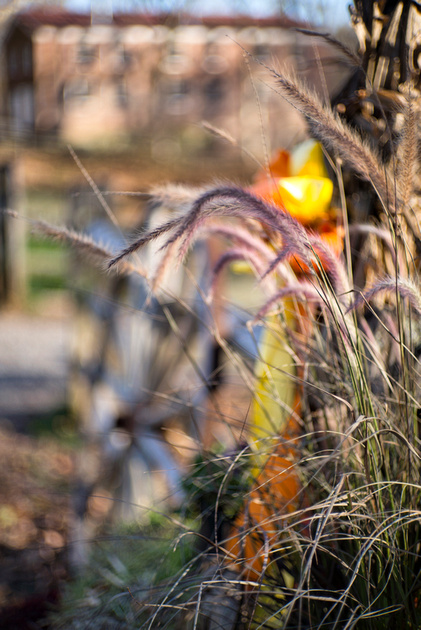

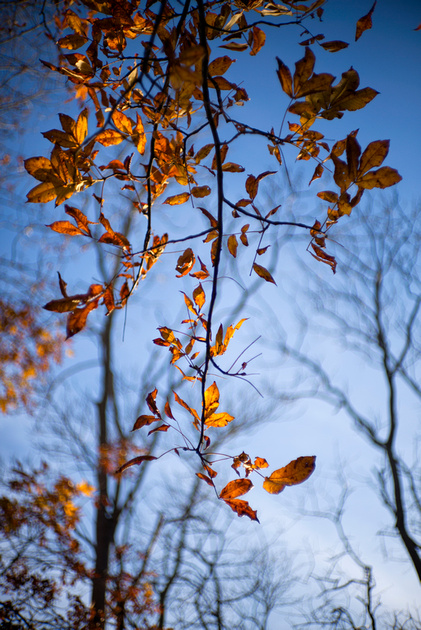

Photos above: Canon 50/1.4 LTM lens on digital Leica M-E 240 camera @f/1.4 (left) and @f/8.0 (right)
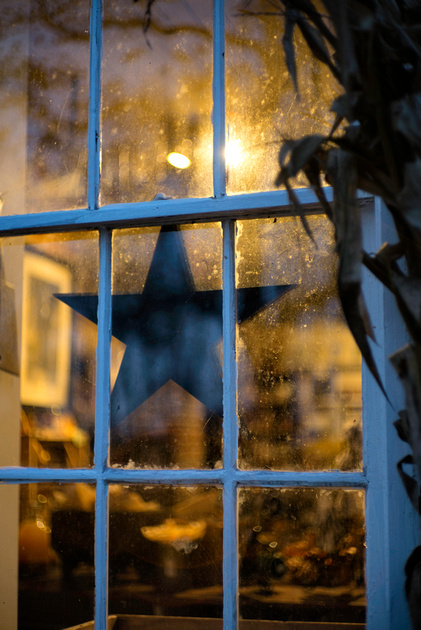

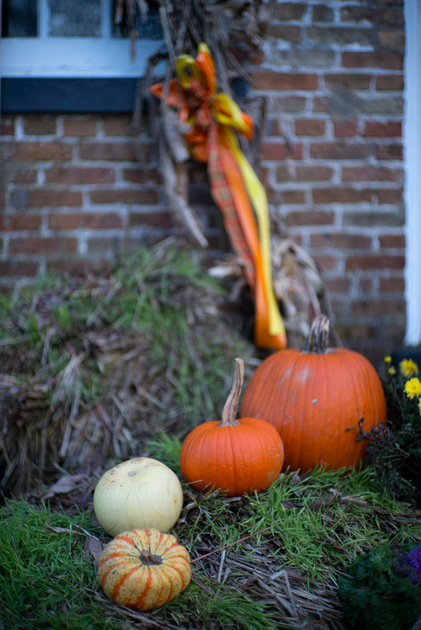

Photos above: Canon 50/1.4 LTM lens @f/1.4 on digital Leica M-E 240 camera in a dim light shooting scenario after sunset. The photos were taken handheld at ISO 400.
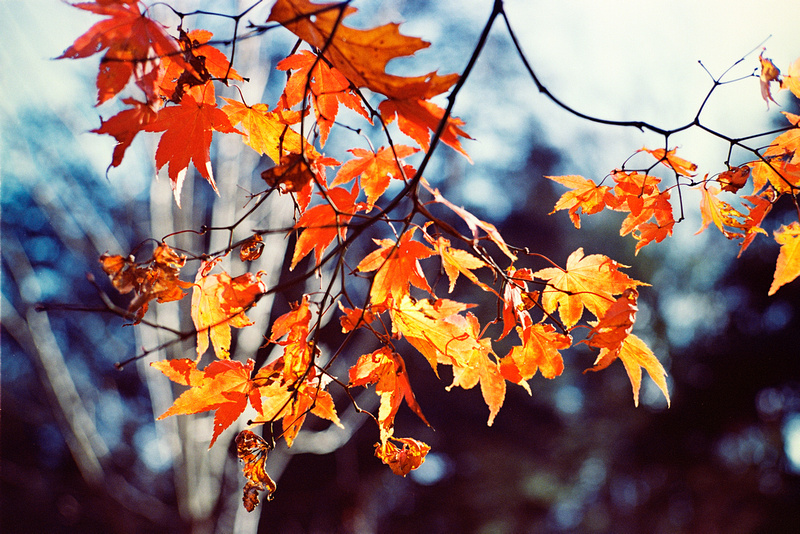

Photo above: Canon 50/1.4 LTM lens on Leica M3 camera with Kodak Ektar 100 film @f/2.8. Even stopped down a bit, the bokeh is still great.
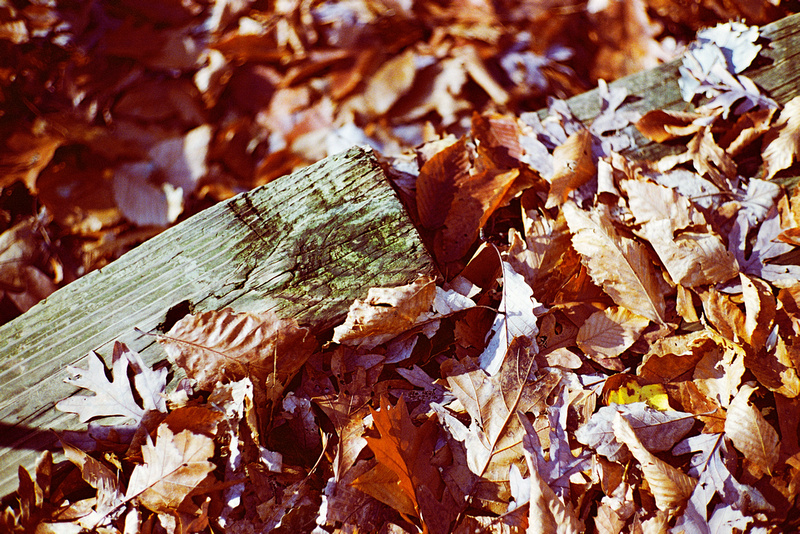

Photo above: Canon 50/1.4 LTM lens on Leica M3 camera with Kodak Ektar 100 film @f/2.8.
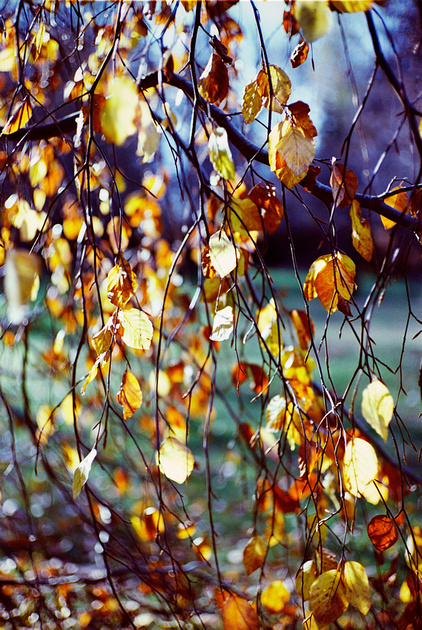

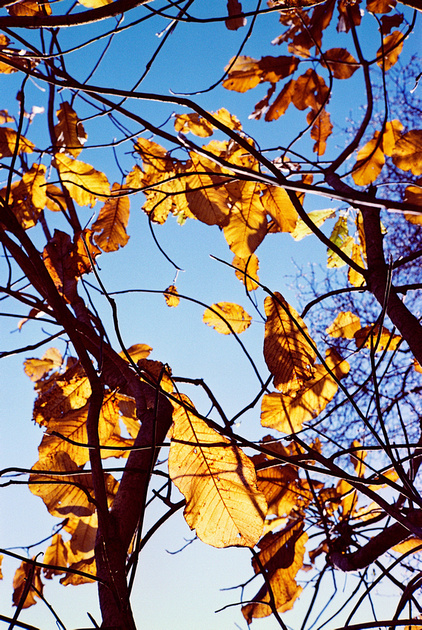

Photos above: Canon 50/1.4 LTM lens on Leica M3 camera with Kodak Ektar 100 film @f/2.8 (left) and f/5.6 (right).


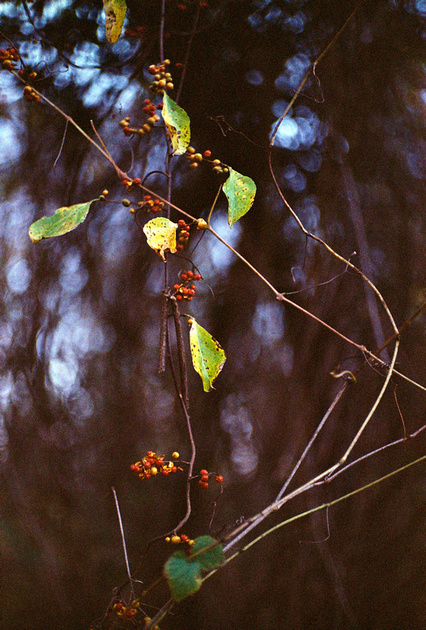

Photos above: Canon 50/1.4 LTM lens on Leica M3 camera with Fujicolor Super HQ 200 film @f/1.4.
Small and Overlooked but a Hidden Gem: Cosina-Voigtlander 25/4.0 Snapshot-Skopar LTM
This photo blog is about the smallest 25 mm wide angle lens made - the Cosina-Voigtlander 25/4.0 Snapshot Skopar lens. I purchased this lens as nearly mint copy online to have a wide angle LTM lens to use with my Leica IIIc camera. I got it for $200 which was a very good deal at the time. I didn't want to spend a lot of money for a LTM lens. I could also use it in combination with my already existing external metal combination Voigtlander 21/25 mm viewfinder (the newer round one model with improved optics than the plastic body predecessor).
The lens is tiny - without hood and caps only 35 mm from rear to front. The lens fits conveniently 39 mm filters - standard diameter size of many Leica M lenses. The small lens size comes with one debit - it has no rangefinder focus coupling. Instead the lens allows quick focus with a click-stop focus ring applying zone focusing: it has stops at 0.7, 1, 1.5, 3 meters, and infinity. I was skeptical when I first tried this lens and afraid to have many out of focus photos - but the opposite is the case - it is very hard NOT to focus correctly with this lens. The wide angle of 25 mm allows a good wide range to be in focus - therefore the lens does only supply a very simple hyperfocal distance scale. More is simply not needed - already at f/4 and a rough estimate of the focus point will nail the focus. Aperture f/8 is a guarantee to have everything in focus. I never used this lens at an aperture smaller than f/11 (meaning f/16 or f/22). I am used to the metric system, so having the distance scale in meters is a benefit to me. It might be a culprit for somebody used to the ft distance scale though which is not printed on the focus ring.
I also like the lens design a lot - both focus and aperture rings are small but can be easily moved. The focus ring has a tiny metal focus tab which has to be used to turn the focus ring. The focus ring does not allow to be turned directly on the ring itself. I personally prefer turning focus rings just on the checkered ring pattern instead of using the focus tab. But I got quickly used to turning this ring by using the tab. The distance locations from minimum focus distance (0.7 m) to infinity are very close next to each other which makes it very easy to quickly move from minimum distance to infinity quickly.
The aperture ring has click half stops from f/4 to f/22 and contains 10 aperture blades.
The lens comes with a small round metal hood which seems to be sufficient to avoid flares from my experience with this lens so far. The round hood can be screwed into the outside lens thread. It has one debit - if a 39 mm filter is attached before the hood ring is mounted, the hood often does not fit outside the attached filter. I sometimes simply push the round hood loosely onto the outside of the filter to allow some flare control.
The Voigtlander metal front lens cap sits both on the metal hood ring or directly on the lens itself. The cap sits a bit better and tighter on the hood ring. The lens has a quite long rear plastic lens cap to allow for the protruding back lens element. Important to hold on to this cap because it is unique for this lens.
The lens is built very well with full metal housing. Only debit as in all of my other Cosina-Voigtlander lenses is the too easily removable black paint. The paint starts to loosen first at the aperture and lens holding rings. The silver metal starts shining through - it does not affect functionality of course but will certainly affect the used lens value just for viewing reasons. None of my black Leica lenses experiences the same issue. I wish Cosina would do a better job with the black paint on their lenses.
The lens performs very good optically. B&W photos turn out crisp and sharp with good contrast. Colors appear with excellent tonality. There is barely any corner vignetting wide open and certainly not at f/5.6 and smaller. Big and often overlooked benefit of this lens is its capability to perform excellent in infrared light. There is no IR hot spot seen at f/8.
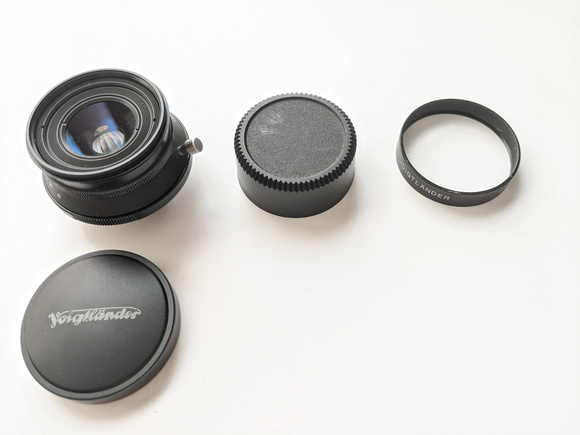

Photo above: Cosina-Voigtlander 25/4.0 Snapshot Skopar LTM lens with caps and round lens hood
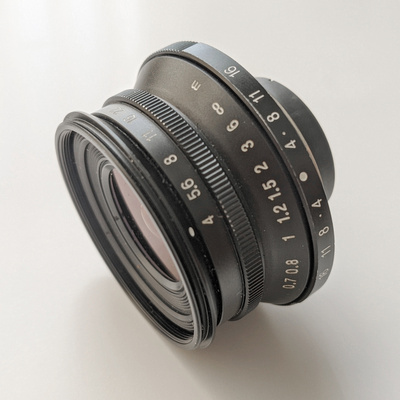

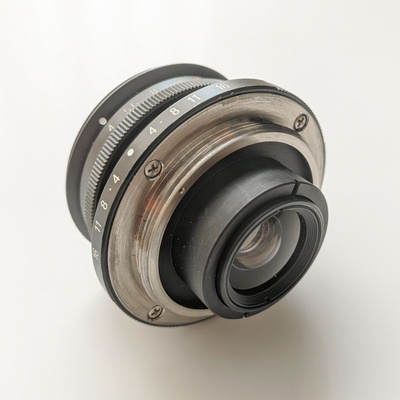

Photos above: Cosina-Voigtlander 25/4.0 Snapshot Skopar LTM lens from side and rear view
The lens was discontinued over 10 years ago but can still be found as used copy online. The name "Snapshot Skopar" likely refers to its potential usage in street photography due to its fast zone focusing capability. But the lens can be used in far more situations other than street photography. It's a perfect small and light travel companion to get the wide shot (85 grams weight). Cosina made a similar 25/4.0 M-mount lens without the click stops of the focusing ring. There is also the discontinued Cosina-Voigtlander 25/4.0 Color-Skopar M-mount lens which has rangefinder coupling and focusing. It is a bit heavier with 144 grams. Both lenses have 7 elements in 5 groups.
I haven't tested my CV 25/4.0 Snapshot Skopar in combination with my digital Leica M-E 240 yet but will add photos taken in this combination when available. I have only seen that this lens doesn't work well when attached to my Sony A7R - severe corner vignetting with purple colors.
A few example photos of the CV 25/4.0 Snapshot Skopar lens mounted on my Leica M6 with LTM/M adapter and Rollei Infrared 400 film:
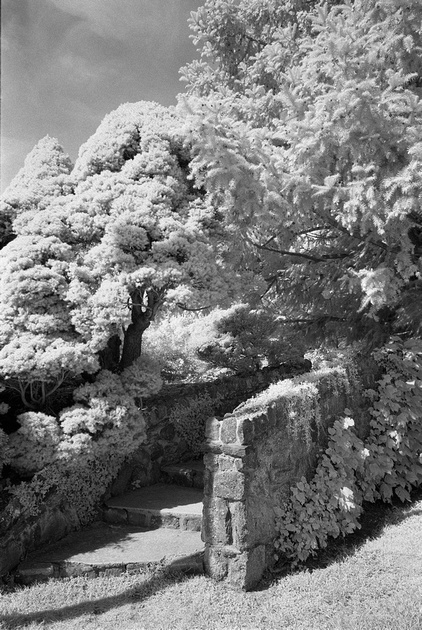

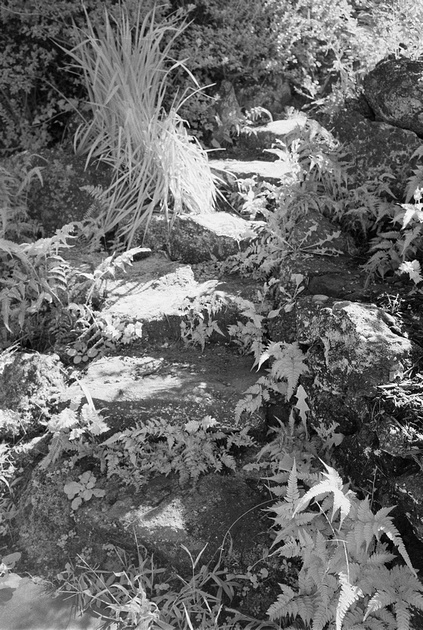

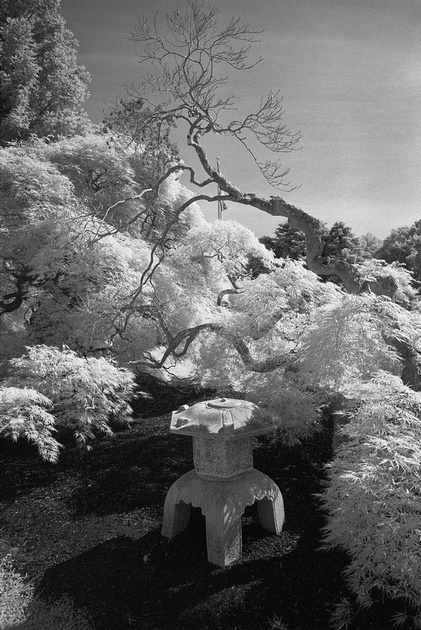

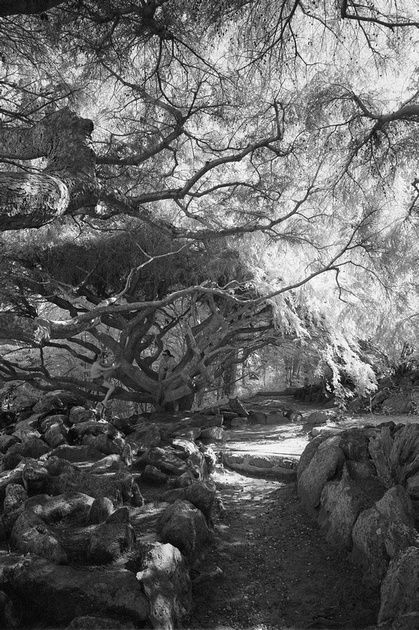

Taken in combination with Leica M3, LTM/M adapter, and Ilford PanF+ 50 film:
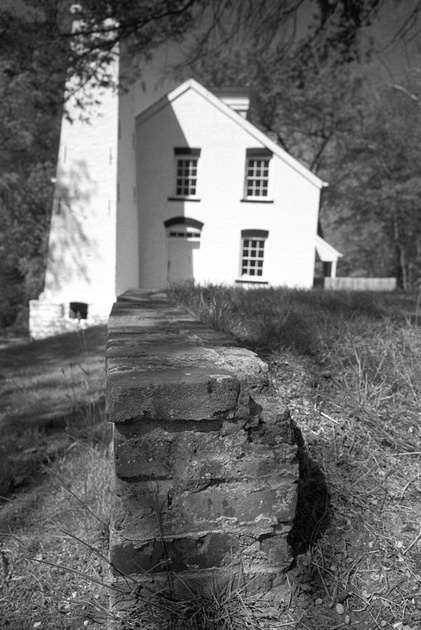



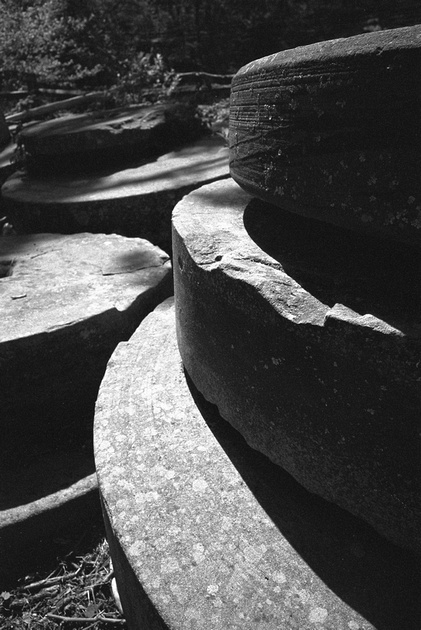

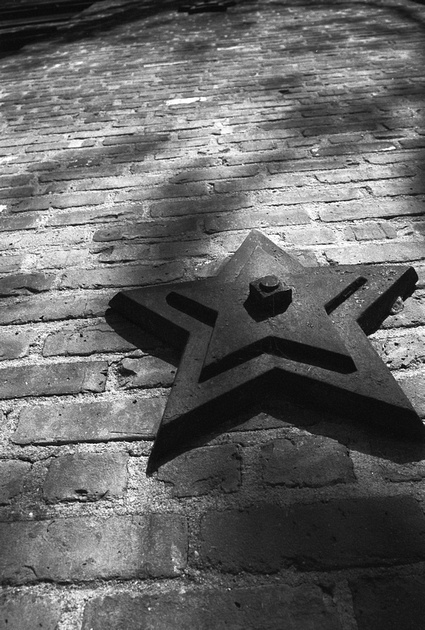

Taken in combination with Leica M6, LTM/M adapter, and Kodak Porta 160 film:
 Cliffwood Beach, NJ - Kodak Porta 160 film
Cliffwood Beach, NJ - Kodak Porta 160 film
Leica M-E 240 Review
After using Leica LTM and M cameras for five years, I decided to add a digital Leica M camera. Main reason for me was to use my good LTM and M lenses on a suitable digital camera without adapter - I managed it well to use my rangefinder lenses with my Sony A7R camera for many years, but especially ultra-wide rangefinder lenses caused some color fringing and blurred corners of the full-frame sensor due to the thicker sensor stack used in the A7R. Problem with Leica M cameras is of course the price - I am writing this blog shortly after the latest flagship model - the Leica M 10-R - was released for over $8K new. But even when looking for used Leica M 10 cameras, the price tag was still around $4.5-5.5K. As I learned from buying Leica M mount lenses used, patience is key to wait for a suitable offer. One day I found a Leica M-E 240 offered on a local online sales platform for a good price. The M 240 sensor has a bit lower dynamic range (DR) than its M 10 successor and the high ISO is limited to ISO 6400 but the 24 MP resolution is the same as in the M 10. Not a biggie for me since I know that I am rarely needing high ISO in my style of photography and can live with a bit less DR. I met with the seller and it turned out that the description of the camera stood up to its promise: it was a nearly brand new M-E 240 originally purchased in summer 2019 with only about 800 photo frames taken. No scratch or any kind of mark on the camera either, also the sensor appeared perfect. I bought the camera and so far have no regret of doing this purchase. Later I found out that the M-E 240 was only produced for a short period of time in 2019 - only 750 cameras were made. I believe I got a great deal regarding price/quality ratio - impossible to get with any kind of M10 camera models for a while to come. The only compromise I had to make was in regard to sensor resolution - I was originally hoping to keep a resolution similar to my Sony A7R with 36 MP full-frame, so 24 MP was pulling me back to my Canon 5D MkII shooting days I thought. But meanwhile I am glad that I made the purchase since the M 240 sensor has benefits over the older generation of Canon 5D MkII sensor from 2009 (for example the M 240 has much better DR!). I summarize my pros and cons seen in the M-E 240 in bullet points below:
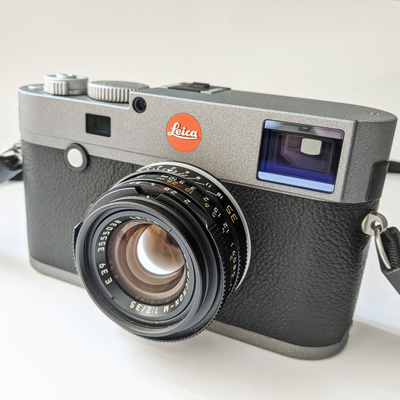

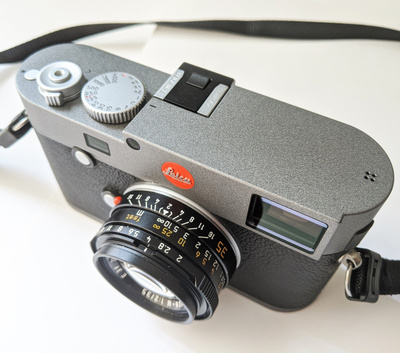

Photos above: Leica M-E 240 with Leica 35/2 Summicron-M vers. IV (pre-ASPH) lens
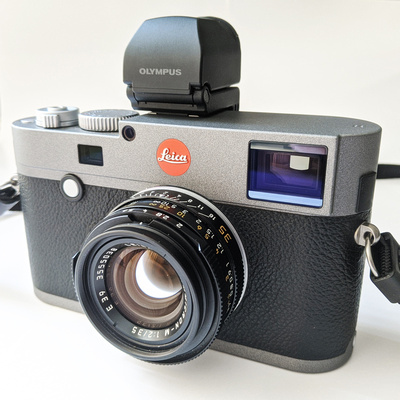

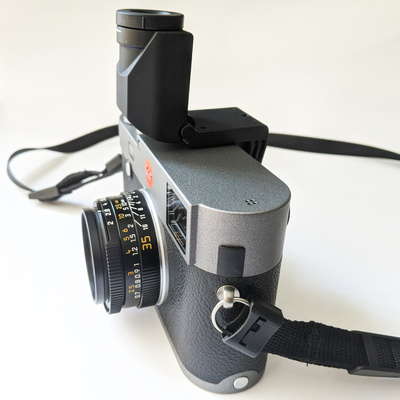

Photo above: Leica M-E 240 with optional VF-2 EVF. It can be flipped into vertical position. Olympus VF-2 and Leica Viscoflex EVF2 are exactly the same model and only different in price.
PROS:
- 99% of options as the twice as expensive M 240: The M-E 240 was sold by Leica for a very short time in 2019 as entry model likely to attract new customers and to empty stock of existing M 240 bodies before all production moved to the M 10. The original sales price of the camera was $4K and therefore 42% below the original M 240 sales tag. Leica took the original M 240 model from 2013 but doubled the image buffer size to 2 GB. The M-E 240 has no internal speaker as the M 240 series if this is of any importance (I doubt it). The M-E 240 menu and sensor/viewfinder specs are otherwise mostly the same as in the other M 240 models.
- Buffer size: The buffer size of the M-E 240 was doubled to 2 GB from 1 GB in the original M 240 series. This is helpful for long burst shooting which I rarely if ever do. But it's nice to have it as option at least.
- Weight and built: The camera is heavy - 680 g, 1.5 lb. The M 240 series including this M-E version is more bulky than the Leica rangefinder film cameras and the M 10 successor. I had to get used to the weight of the camera: you need to hold it differently than my smaller rangefinder film cameras. Best is to grab the camera with the thumb of the right hand on the protruding element next to the dial button on the upper right back of the camera and hold the right side with the rest of the hand. This avoids unwillingly touching the viewfinder window. I added the weight factor as a positive since the camera's weight allows to shoot handheld at very low shutter speed without having image stabilization. The camera is built extremely well, feels solid and of good quality. Day and night compared to my plasticky Sony camera. I also like the unique M-E body design with anthracite top plate which matches both black and chrome lenses very well.
- Sensor dynamic range: The sensor can push shadows easily 3 stops at low ISO and keeping structural elements. I found it to work similarly well as my A7R sensor in this aspect.
- Optical rangefinder viewfinder: clear and bright, better than the M 9 from experience when I once tested the M9. The frame line color can be changed in menu (I keep it white) and shows the frame lines very well. Frame line selection is done electronically and works well for M lenses but needs manually adjusted with adapter-attached lenses (see below).
- LiveView/EVF: Leica allows to attach as optional accessory an electronic viewfinder on the hotshoe. Leica didn't make this EVF on its own but had it made by a third party company (rumors claim by Epson). The exactly same EVF is available as Olympus VF-2 and Leica Viscoflex EVF2 - but with a significant difference in price. You can get the Olympus VF-2 for about $150-200 used whereas the Leica Viscoflex EVF2 costs more than twice this amount. The only difference is the brand logo on the outside of the EVF. Hint: the newer M 10 camera models rely only on a newer Leica-based external EVF which then costs even more! The EVF quality with 1.4 MP resolution is surprisingly good even it is no longer latest technology either (which is now 2.4 MP for M 10 models). The EVF allows critical focusing when needed and to see in one window exposure values of the image. One big advantage I see by using the EVF is that you don't need to move the camera away to see the LiveView image on the back screen. This is especially useful in sunny conditions. Another advantage of the EVF is that it allows to compose by looking into the flipped EVF from the top similar to vertical viewfinders in some film cameras. For example I had the camera mounted on my tripod below the height of my hip, but I composed very well by looking vertically into the EVF from above. In high contrast areas, the VF-2 EVF tends to be a bit brighter looking than the actual photo.
- Wide and ultrawide lenses: Work extremely well on the M-E 240. I tested the CV 12/5.6 II, CV 21/1.8, CV 28/2.0, and also the CV 25/4.0 LTM Snapshot Skopar lenses with great success. No color fringing in the corners of the frame nor blurriness. Now these lenses work as well for me in digital as they already did on my film rangefinder cameras! The steep incident light angles with the ultra-wide lenses is obviously not an issue with this sensor and its stack layout. This fact alone makes this camera worthwhile for me.
- Image quality: Probably the best digital camera I had so far in regard to the quality of both directly captured DNG and JPG files. There is not much post processing needed if the photo is done right straight in the camera. Colors come out very naturally like the eye sees them. The images look not at all flat - I see a big difference here compared to my Sony A7R files which require more processing when taken in the standard photo mode. B&W JPG files are often spot on and might only require some slight contrast and highlight adjustments in post processing.
- HDR: the camera offers HDR setting between 0.5 up to 3 stops. Three or five frames can be selected in the menu - a bit cumbersome to use the wheel to make changes for aperture stops and number of frames and then press the set button - I often forgot to press the latter only to be forced to redo the whole HDR setup procedure again. But once you get used to this, the HDR mode proves a very feasible and good one in this camera. It compensates for the limited dynamic range of the sensor especially in highlights. The photos are taken very quickly, I was able to capture 5-frame HDR shots handheld easily. The photos remain separate on the card depending on the file saving setup (I save them as RAW and JPG) - the camera won't process them upfront into a viewable full HDR like other cameras do, for example the Canon 5D MkIII. To get the HDR, it needs to be done in post processing with software. Especially for scenery shots, I often use this feature now. This way I am able to keep the sky blue and see details in the shadows.
- Video: All the M 240 cameras including the M-E 240 version allow for is 1080/25p video. But honestly, nobody will buy into Leica rangefinder cameras for mainly using it with video. I see it as a nice-to-have gadget which comes technically nearly for free as part of LiveView. The M 10 on the other hand has no video option anymore. I suspect it was removed in this successor model to allow a slimmer camera body without danger to potentially overheat. Other reason is differentiation in Leica's own camera market: to make video-interested customers look into the SL/SL2 camera series instead. The M 240 series is the last Leica digital rangefinder camera series which still offers video in a 2013 technology standard format (the first M 240 first came out in 2013). The later M 262 model released in 2015 excluded LiveView and video capabilities.
- Shutter: The M-E 240 shutter is one of the most silent Leica M shutters I know from own experience. You barely hear a click when releasing the shutter. It is super non-sensational, allowing the camera to be used in quiet gatherings like performances or ceremony in churches etc. It can handle up to 1/4000 sec exposure time which is 2 stops faster than my Leica M 7 with a maximum of 1/1000 sec (great when using faster lenses without ND filter!). The shutter uses a double metal blade system and is in front of the sensor. The grey bar in between is the reflective area to allow light metering. The shutter can handle a maximum of three shutter flaps per second - far below what modern cameras can do, but not really important for a rangefinder shooter.
- Battery and battery charger: The BP-SCL2 battery has a long lifetime when fully charged and used predominantly just with the rangefinder viewfinder. Without LiveView or EVF, this battery gets you through a full day of shooting. The charger comes with two cables - one for the US, the other for the German outlet standard. This is ideal for me since I travel often between both countries and don't need to worry with a 110/220 V adapter for this charger. It also comes with a plug-in car charger for the battery. Charging a totally empty battery takes about 4 hours with the Leica charger. Supposedly this battery has no memory effect.
- Light Meter: The light meter in the rangefinder viewfinder is exactly the same as in the Leica M6. You have up to three choices of metering modes: classic, center, and multi-field. The classic method is the standard metering as in the M6 for example. Center method might come useful for close-up/macro work, and the multi-field is only applicable in LiveView or optional EVF mode. I keep the metering mode mostly in classic mode since I am also comfortable with this method from my Leica M 6/M 7 cameras. Interestingly, the Leica M 7 has a few more precise metering options in its display than the M 240 series has. This has proven to be useful for slide film photography where precise metering is key. Overall the metering system of the M-E 240 works very well, too.
- Camera Menus: For me a clear positive in this camera even I heard other users saying it has too many options (coming from Sony MLC, it is easy to satisfy me with a well structured camera menu!). I had an easy time to get used to the menu structure even it took me a while to find the singled-out INFO and SET menus which contain important additional features. Some menu options appear a bit weird when first using it like setting the ISO - it only works when the ISO button remains pressed and moving the dial at the same time. Leica could have just allowed to press ISO once and then changing the value accordingly. Probably it was done as safety step that the ISO isn't changed accidentally. I don't like using Auto-ISO, therefore I am quite often using the ISO button to change the ISO value. The camera menu allows to save settings as user-specific custom file which can be loaded and applied any time. I have currently two custom settings: one for regular color-based shooting and a second one for B&W.
- Shutter release cable: The M 240 uses the same method to with cable release as in the older M film cameras. Any kind of 35 mm camera based cable release with screw-in thread will work. There is no option to use a wireless cable release.
- Tripod mount plate inlet: This is a little thing which always annoyed me when using my Leica M film cameras on a tripod - that the tripod plate is always mounted off-center on the side of the base plate instead. I have to move the tripod off center to adjust for a central camera/lens lineup with the subject. The M 240 series has taken this into account and allows now to mount the tripod plate in the middle of the base plate. The camera sits now in center on the tripod head. The tripod mount uses the newer standard male 3/4" tripod mounting plate screws (same as for example in the M 6/M 7 cameras). Only slight issue here is that you can't remove the base plate when the tripod mount plate is still attached. The screw goes directly through a hole in the base plate into the camera body. You have to remove the tripod mount plate first before being able to remove the base plate, for example if you need to change the battery.
- Camera menu and camera packaging: Simply excellent. A nice black cardboard box with magnetic flaps and drawers for manuals/cards and charger and cables. The camera menu in German and English is well written and allows to find camera options easily. Probably the best camera menu I ever had for any of my digital cameras in the past. Leica makes it clear that you buy not only the camera but an experience here. I am glad that I got all the original packaging even I bought the camera used.
CONS:
- Reduced handgrip functionality: Often overlooked in reviews, The M-E 240 is not compatible with the full electronic Leica handgrip #14495 commonly used in the rest of the M 240 series. You can attach it to the M-E 240 body, but all (or most?) electronic functions like GPS will remain disabled. This information can only be found in a little addendum sheet Leica added to the camera manual (the original manual which comes with the camera mentions #14495 as suitable handgrip option which is false). If you decide to get a handgrip for the M-E 240, you might be better off with the cheaper version without electronic features, #14496. No idea why Leica disabled this functionality in the newer M-E 240 model since the ports and software are all the same as in the M 240. I suspect it was one way to hinder professionals going with the much cheaper and newer "entry" level camera version. This is the main difference to the original M 240: not the camera itself and its functions, but in regard to compatibility with the handgrip accessory. This might or might not be a deal breaker for some (not an issue for me other than USB accessibility).
- Viewfinder: Same as in the original M 240 series, the viewfinder magnification is less than the common 0.72x and only uses 0.68x magnification. The rangefinder rectangle to focus both frames is therefore a bit smaller than in most Leica rangefinder film cameras like the M6/M7 series for example. Also the viewfinder itself is not as wide as in film-based rangefinder cameras. With a 28 mm lens, you need to use the whole viewfinder frame available, there is barely any space outside the frame left. The viewfinder window can smudge easily, always have a lens cleaning cloth available to clean the window.
- Automatic lens recognition: The camera allows for 6-bit coded M lenses and can then automatically apply an in-camera profile for a specific lens. The lens frame in the viewfinder is electronic and selected by the bayonet mount according to the M lens focal length. If you have the camera menu set up with "Automatic Lens recognition", this will apply the lens frame in the viewfinder automatically for all M lenses - no matter if coded or off-brand. It's getting a bit tricky when using older vintage LTM screw-mount lenses (or any other kind of manual focus lens) with adapter: you need to have the camera menu set to automatic lens recognition. After you attached the LTM/M adapter, the correct pair of frame lines will be displayed. In case you need to change the LTM/M adapter with a different pair of frame lines, you need to turn the camera off first - otherwise the camera remembers the former setting and doesn't change the frame lines! After you exchanged the adapter, turn on the camera again, and the different frame lines according to the used adapter will be displayed.
- High and low ISO range: this is the obvious and main limitation of the M 240 series in general, but you would only consider such camera if you don't need high ISO in the first place (otherwise you really have to go the M 10 route which is its main improvement over the M 240 series). After testing exposures at ISO 100 to 6400, I am feeling comfortable using the camera up to ISO 3200. ISO 6400 shows quite a bit of noise but which can also be significantly reduced in post processing with anti-noise filters. ISO 100 is pulled from the native minimum ISO 200 camera setting. It keeps exposure values at ISO 100 the same as the ones measured at ISO 200 without changing the registered amount of light (seen through exposure simulation at ISO 200 and 100 in the EVF).
- Sensor dynamic range: Regarding highlights (for example sky and clouds), this sensor is super sensitive and can clip highlights very easily. There is no way to rescue clipped highlight structures in post processing. I found one stop overexposure in highlights is already a culprit. Pulling even slightly overexposed highlights is impossible - here the sensor differs significantly from the Sony A7R sensor performance. Since shadows can be pushed nicely on the other hand with the M 240 sensor, make sure to better underexpose half a stop or a stop. Use a graduated ND filter for landscape photos or push shadows in post processing. When underexposing areas too much, you might observe greenish casts in the shadows which you might need to desaturate in PP.
- LiveView/EVF: the magnification area cannot be moved within the frame - the whole camera needs to be moved if an area to focus is outside the center magnification frame. This can cost time to focus and then to move the camera back to its original position on the tripod. The EVF slows down shutter release times in case this is critical. The EVF uses a lot more battery power - better have a second charged battery ready when using the EVF more often. The camera's back screen cannot be tilted - hard to go back to this when coming from a mirrorless camera with tilt screen.
- Access to battery and SD card: only possible by unscrewing the bottom plate. I guess you get used to, but I felt it was a but of a step backward when coming from DSLRs and MLC where the battery and memory card simply sit in a chamber which can be opened and closed with a lid quickly. I found that the plate can't be removed if a tripod mount is still attached to it. This can cost lots of time to change a battery for example when the camera sits on a tripod.
- Red Leica button: Nothing against the brand logo, but I am used to tape Leica name and button on my Leica film cameras to be less conspicuous. The anthrazite M-E 240 camera color of the top plate looks actually very nice, but any kind of black or silver tape will stand out against the grey background. So far I haven't found a solution and keep the red Leica button visible.
- Optional battery: The M 240 series BP-SCL2 battery is much thicker than its successor in the M 10 and lasts also a lot longer when fully charged. But there is visible drain of battery power when using LiveView or optional EVF. A second battery is a good idea to keep going especially when using the optional VF-2 EVF. 50% remaining battery charge was used up in combination with the VF-2 in two hours. Problem is the price - a new one costs still about $200, and no third party company offers a replica. Used batteries go for $150 - not cheap either, and you don't know what you might be getting and how much the battery was used before. I had to bite the bullet and bought a new BP-SCL2 battery as spare one.
- No ultrasonic sensor cleaning: Standard feature in most digital cameras now, but not in the M 240. I have mixed feelings about having this option - I didn't see much benefit of ultrasonic sensor cleaning in my Canon 5D MkII and only a bit with my Sony A7R. In fact it can delay turning the camera on or off. On the other hand I need to dry-clean the M 240 sensor with my arctic butterfly swap quite regularly.
- Strap: Do not use this strap! After a couple weeks of walking around with this strap, I realized that the plastic fixing on the strap for the metal ring holders gives indents on the side of the camera in the black leather. The metal is protected for this reason with plastic parts on both sides of the camera which helps, but the lower end below the strap mounts isn't protected. I still need to find a camera which comes with a well suited and easily adjustable neck/shoulder strap. Same here with the Leica M-E 240: First I had to find an online YouTube video to figure out how to connect and disconnect the strap from the camera - it is not intuitive. When using the Leica strap, it also became a hassle with curled strap all the time - no fun. Simply purchase another strap and forget about this one - IMO it is unusable. The strap is really nothing special either other than the Leica brand name on the shoulder/neck plastic cushion.
What do I miss in the M-E 240?
- Easy accessible USB port on the camera. The port is only available with the optional handgrip I mentioned earlier. It's not a must-have for me since I normally simply unplug the SD card to upload the photos on my hard drive, but it would be nice to have to allow for example battery charging inside the camera. Due to the limitation of the handgrip functions on the M-E version as mentioned earlier, I am not sure if the USB port is accessible in the first place.
- Mentioned above, not being able to move the zoom magnification window in LiveView or EVF is a disadvantage. This alone will likely stop me to use the M-E 240 for macro photography and using my Sony A7R MLC instead which is much better suited here with movable zoom magnification window.
- I wish the M 240 sensor would allow highlight capture and pulling like my Sony A7R does. The M 240 behaves more like the M 9 regarding highlights. I am spoiled here with the bit better dynamic range of the A7R, but going back a step feels hard after getting used to the highlight post-processing capability of the Sony sensor. But shadows can be pushed nicely with the M-E 240, I just need to make sure that I always underexpose instead of overexposing highlights. The other option is to use the HDR function of this camera.
Overall I am very happy with this camera purchase. Leica is and remains an expensive brand, but getting a used (and nearly mint) camera for a good deal limits value depreciation significantly and allows me to actually use the camera in the wild without being afraid to carry a big jewel around my neck or shoulder. The M 240 was its first and last hybrid camera series made by Leica combining rangefinder, LiveView/EVF capability, and video. The M-E "entry" version has the same capabilities as any other professional M 240 series mostly just compromising in electronic handgrip accessory functionality. Leica currently doesn't make entry-level cameras or Summarit-lenses anymore, they also removed video capability from the M camera series fully. I believe therefore the M 240 series is and will remain in demand for many who accept the camera's lower ISO limitation compared to expensive current M systems. I will use the M-E 240 for years to come in combination with my Leica LTM and M film cameras. The M-E 240 won't replace my track-proven Sony A7R camera either - both will be used in different shooting situations.
The Reciprocity Factor for Film Photography
Recently I was shooting my Hasselblad 500 C/M with Fuji Velvia 50 slide film which I really like due to its color tonality. I found myself in a situation where I had to take long exposure shots with this kind of film - anticipating that this could be the case before heading out to shoot, I looked up online how much time needed to be added to the measured external light meter reading to compensate for lower light sensitivity of film with exposures often above 2 to 4 seconds. This factor is specific for every kind of film, and is named "reciprocity" failure or factor.
This factor is not needed in digital photography since a digital sensor receives and reacts to light in a linear way from dark to bright. This means that even long exposures are measured correctly by an external or internal camera-based light meter for digital photography. Since the majority of photographers is shooting digital, most have never come across the term "reciprocity" factor. It plays a huge role when taking photos with film - light is not received in a linear way like in digital. Film is less sensitive at both ends of the dark/bright histogram ends - it can be shown as a double-S-curve with turning point in the center. You might know that you can overexpose film quite a bit - it depends on the film, but 3-4 stops can be handled by most negative films quite well for overexposure without losing detail (this is different with slide film which can only handle a maximum of one stop overexposure before blowing out highlights - similar to digital where beginners often overexposure highlights instead of pushing shadows in PP). The same goes for dark areas with longer exposures needed - you actually need to increase exposure to avoid getting pitch dark shadows without detail using film. This is valid both for negative and positive (slide) films! Only that the amount how much more light is needed depends on a) the film, and b) the situation/scenery.
Best is to explain this with examples. As I mentioned in the beginning, Fuji Velvia slide film is not a beginner's film to be used since it does not allow a wide margin for wrong exposure - both at dark and in the bright. Rule of thumb is to avoid overexposure at all cost and rather underexpose this film half or one stop to avoid clipping highlights when present. The film is great to use during regular daylight in colorful scenes - what I like a lot is that it does not require any PP with color saturation after digitization/scanning. Kodak Ektar 100 negative film is also giving great colors but always annoyed me with its tendency to show shadows in blue/magenta cast. Fuji slide film fully avoids this issue and looks very natural in darker areas instead.
I have never tested Fuji Velvia 50 for low light photography - I only found few examples of night shooting with this film online. This time I gave it a try - it was sort of a gamble since I only had three frames of my 120 film left to hit it. I wanted to cover the sunset and the night scene of NYC from Liberty State Park across the river. How did I get to the results shown below?
First, I had to keep in mind the extension or reciprocity factor of this film above 4 seconds. It states to add an extra stop between 4-8 seconds, and multiply the exposure with factor 1.5x between 8-12 seconds. Above 16 seconds, the reciprocity factor increases to 2x. The first shot with this scene was taken before sunset at f/11 with 2-stop ND filter to blur the water a bit. The exposure here was 1 second - no need yet to use the reciprocity factor:
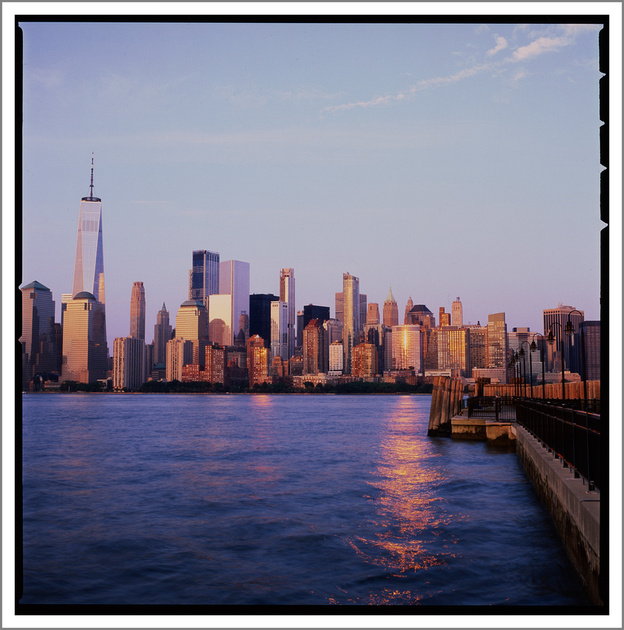

The sun was setting soon after, and quickly the light intensity dropped. I was still at f/11 but now without ND filter since there was no more need to extend the exposure time with less available light. My external light meter showed for ISO 50 an EV-value of 6 which corresponds to 2 seconds at f/11. Now I am hitting the range where the reciprocity factor comes in play - using the scale shown above, I would need to apply 2+1 = 3 seconds instead of the measured 2 seconds. But the situation/scenery also comes in play - I wanted to have the scenery darker to bring out the blue/magenta sky better. I estimated that 2 seconds should be sufficient and ignored the additional second. The result turned out exactly as I anticipated just with more saturation than expected:


The light quickly vanished after the sun disappeared, and the city became alive with artificial light. Now my light meter showed me an EV value of 2 which corresponds to 30 seconds at f/11 and ISO 50 film. Using the required reciprocity factor of 2x, I would need 60 seconds to accommodate for the lower film sensitivity. But I wanted to avoid overexposure at all cost for my frame #12 - the last frame I had. I simply estimated that 45 seconds instead should bring me in the right range (taking the average of 30 seconds from my meter and 60 seconds with applied reciprocity factor). I released the shutter with my cable release and held the leaf shutter open in bulb mode for roughly 45 seconds (I counted in my head). The result was again very pleasing - showing all detail but avoiding underexposure:
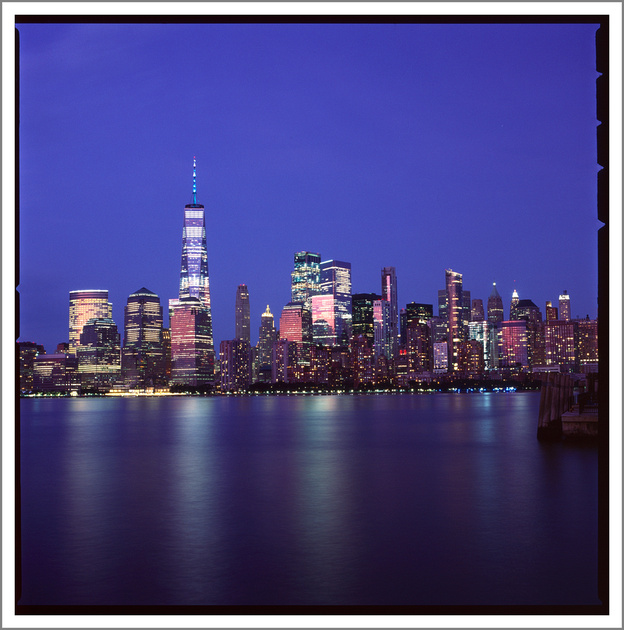

I might actually use this slide film more often for dim/dark light photography after this first experience with it in low light. I really love the bluish cast in the water and the sky which digital would not have brought out in the same way.
